



SELECTED
ISSUE
|
|
Leisure Management - Product design

CLADkit

|
|
| Product design
|

A new material with 10 times the strength of steel, and the researchers using human bones to preserve marble... what’s new in product design
|
|
|
 |

Lasvit’s Neurons illuminates Prince Mahidol Hall |
 |
Mahidol University’s Prince Mahidol Hall has installed a glass lighting sculpture designed by glass and lighting design company Lasvit.
The sculpture uses state-of-the-art LED technology designed to welcome visitors with variable lighting.
The sculpture, entitled Neurons, responds to music played in the concert hall with varied light sequences and colours, turning rhythms and melodies into visual experiences. Its composition is harmonious within the rules of symmetry, despite its random appearance, and was designed as a visual counterpart to the inner conventions of music.
It uses advanced LED light bulbs inside hand-made artistic glass components to create an illusion of movement that brings the installation to life.
Lasvit designer Jana Růžičková said: “The design is directly inspired by the motto of the Mahidol University – the Wisdom of the Land. Our goal was to deliver a timeless design that would fit into the building’s contemporary Thai architecture.”
Richard Ralphs, principal of Pre-College and Boarding at Mahidol University, said: “We’ve worked very closely with Lasvit to create this stunning feature that puts the brain, the spirit and the light into the hall of the university.”
CLAD-kit keyword: Lasvit
| |
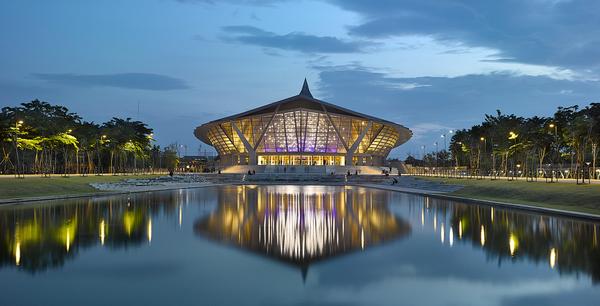

|

Lasvit’s sculpture, entitled Neurons, responds to music with light sequences |
|
|
 |

MIT researchers create material with the best strength-to-weight ratio in the world |
 |
A team of researchers at the Massachusetts Institute of Technology (MIT) has created a new material by compressing and fusing flakes of graphene. This new material has 10 times the strength of steel with only five percent of its volume.
The new material has a sponge-like configuration and a geometric shape resembling coral.
The researchers found that the unique formation of the three-dimensional form was more crucial than the material itself. This suggests that a variety of lightweight, strong materials could be created from different sources using the same geometric features.
Markus Buehler, head of MIT’s Department of Civil Environmental Engineering and the McAfee Professor of Engineering, said: “What we’ve done is to realise the wish of translating these two-dimensional materials into three-dimensional structures.”
Discovered by University of Manchester professors Kostya Novoselov and Andre Geim, graphene is one of the strongest known materials, and the world’s first two-dimensional material.
In its original form graphene is 200 times stronger than steel and one million times thinner than a human hair.
CLAD-kit keyword: Graphene
"We’ve translated these two-dimensional materials into three-dimensional structures" - Markus Buehler, MIT
| |
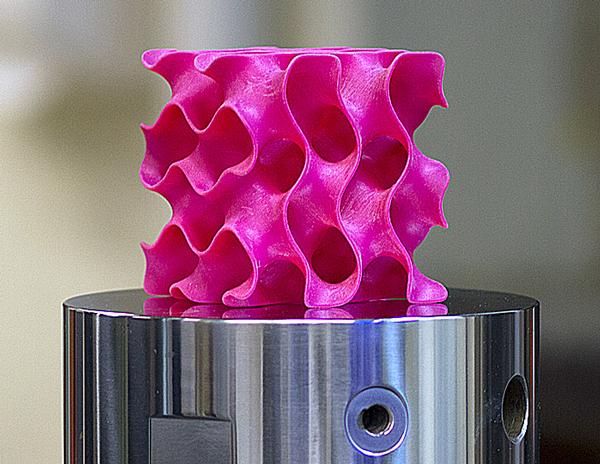

|

The material is created by compressing and fusing flakes of graphene |
|
|
 |

David Rockwell reveals collaborative collections |
 |
New York-based designer and architect David Rockwell has collaborated with a number of agencies to launch new lighting, seating and flooring collections for the hospitality industry.
Rockwell created the lighting collection with Turkish lighting design company Gaia&Gino. The collection features three designs: Twist, Ribbon and Leaf.
For seating, Rockwell collaborated with bespoke furniture design company Stellar Works to create an elegant seating solution based on the timelessness of the school chair.
Ethereal Beauty is a collection of bespoke carpets exploring patterns found in nature using soft, tonal textures.
The collection was inspired by artistic representations of the natural world. Ethereal Beauty marks Rockwell’s fourth collaboration with Shaw Contract Group.
Rockwell said: “We are thrilled to be working again with two of our favourite long-time collaborators, Maya Romanoff and Shaw Contract Group, and extending our first furniture collection, Valet, with Stellar Works. While each collection is unique, the products – from the new arm and side chairs for our Valet collection for Stellar Works, to our Cozy woven wool wallcoverings for Maya Romanoff, to our new Ethereal Beauty carpet collection for Shaw Hospitality – have been conceived for designers to use in a wide range of settings.”
CLAD-kit keyword: Rockwell Group
"While each collection is unique, the products have been conceived for designers to use in a wide range of settings" - David Rockwell, Rockwell Group
| |
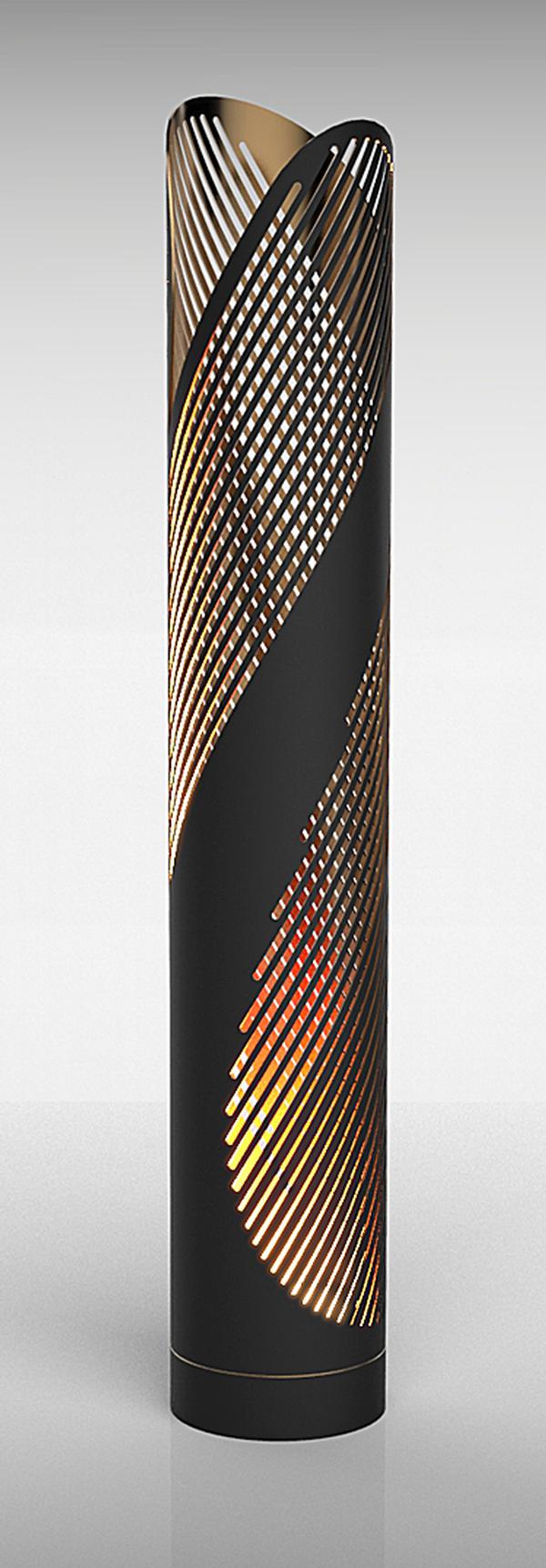

|

Rockwell worked with Gaia&Gino on a lamp collection inspired by nature |
|
|
 |

Marc Fornes uses curves to create strength with new Under Magnitude sculpture |
 |
Marc Fornes and his architecture studio TheVeryMany have created a new sculpture for the atrium of the Orange County Convention Centre in Florida.
The sculpture, Under Magnitude, is both familiar and abstract, and was influenced by clouds, coral and other sea-life.
It is made from 4,672 ultra-thin pieces of perforated aluminium, curved by hand and riveted together to create its unique shape. Each stripe is less than one millimetre thick, but is strong enough to be walked on.
It was created using ‘structural stripes’, a unique method invented by Fornes that uses curves to create strength.
Fornes said: “The material of Under Magnitude is aluminium, which is cut from flat sheets, but when fastened to neighbouring pieces assumes a curved shape and a high amount of structural strength.”
Fornes was inspired by a soap bubble experiment by German engineer and architect Frei Otto, which found that bubbles blown up to the size of a room are more structurally viable than boxes.
CLAD-kit keyword: Theverymany
"Aluminium, when fastened to neighbouring pieces, assumes a curved shape and a high amount of structural strength" - Marc Fornes, TheVeryMany
| |
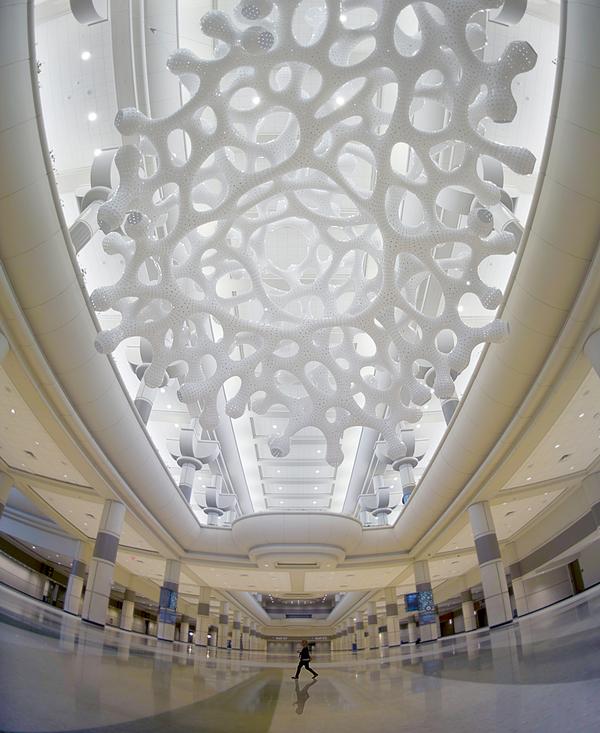

|

The installation is made from ultra-thin aluminium pieces |
|
|
 |

Princeton researchers find marble preservative in human bones |
 |
Researchers have developed a low-cost treatment to preserve marble.
The research, led by George Scherer and Enrico Sassoni at Princeton University, found that hydroxyapatite, a calcium compound found in bones and teeth, could preserve marble from the effects of time and environmental exposure.
The treatment consists of calcite and a saltwater solution that reacts with marble to create the hydroxyapatite.
When applied, the solution is absorbed into the marble and binds cracks in the surface, making the marble stronger and more resistant to environmental elements that cause deterioration.
Scherer’s laboratory has been researching the preservative potential of hydroxyapatite for a number of years as it has valuable properties like being non-toxic and fast-acting. It’s able to penetrate deep inside marble cracks and react in just 24 hours.
Scherer, professor of civil engineering at Princeton, said that the hydroxyapatite treatment acts as a glue. “You want to put something into those boundaries to strengthen and hold it together, and that’s what the treatment does well.”
Additional testing to see whether the compound is strengthened with the application of electrical currents and alcohol is currently being carried out.
CLAD-kit keyword: Hydroxyapatite
"You can put hydroxyapatite into those boundaries to strengthen and hold it together" - George Scherer, Princeton University
|
|
 |

Eness creates interactive LED wall panel |
 |
Award-winning Australian multimedia design company Eness has released a wall panel that transforms ordinary surfaces into creative, interactive spaces.
The light-emitting wood panels, named Lumes, seamlessly integrate into existing surfaces to create an immersive environment. Lumes uses motion-activated sensors to trigger animation and can detect distances, responding with larger animations as people get closer.
The first panel has been installed at the entrance of Cabrini Hospital’s Paediatrics Ward in Malvern, Victoria.
The animation on display at the hospital has a child-friendly design and features falling raindrops, animals peeking from behind grass and launching rockets. The animation is customisable and can be adapted following installation.
“LUMES have the ability to react to time, the weather, movement, vibration, audio or even skeletal and facial recognition,”said Nimrod Weis, co-founder at Eness.
Eness is hoping to further develop the technology so that animation will respond to heat and sound as well as touch and motion, and will also be expanding its material palette beyond wood, canvas and acrylic.
Eness envisions Lumes forming immersive environments in a range of architectural projects including leisure, commercial, tourism and hospitality spaces.
CLAD-kit keyword: Eness
"LUMES have the ability to react to time, the weather, movement, vibration, audio or even skeletal and facial recognition: - Nimrod Weis, Eness
| |
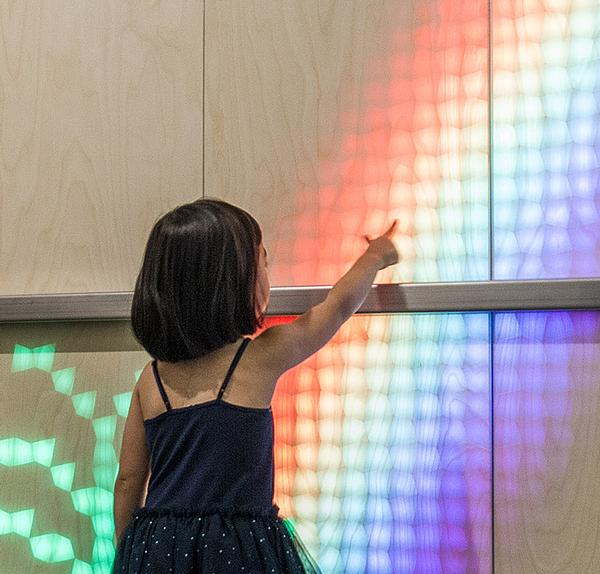

|

Eness installed its first Lumes panel inside a children’s hospital |
|
|
 |

Carlo Ratti reveals digital shading canopy for climate control and beautiful shadowing |
 |
International design and innovation office Carlo Ratti Associati, in collaboration with Dubai’s Museum of the Future, has developed a digitally-operated reflecting canopy to provide shading, climate adaptation and green energy generation in cities.
Sun&Shade is part of the museum’s ‘Reimagining Climate Change’ exhibit.
The canopy uses an array of mirrors that automatically track the sun. Each mirror moves on a double axis to reflect the sun’s rays away from the ground – allowing the control of the level of shading and natural cooling underneath. Reflected rays are then concentrated on a photovoltaic receiver that generates electric power.
“In developing Sun&Shade we were inspired by the Middle Eastern tradition of shadowing in architecture and public space”, said Carlo Ratti, founder of Carlo Ratti Associati.
“Sun&Shade aims to bring this concept to the next level, allowing shadowing to be digitally controlled.”
Ratti said the technology has the potential to significantly boost clean energy production.
CLAD-kit keyword: Carlo Ratti Associati
"Sun&Shade was inspired by the Middle Eastern tradition of shadowing in architecture and public space" - Carlo Ratti, Carlo Ratti Associati
| |
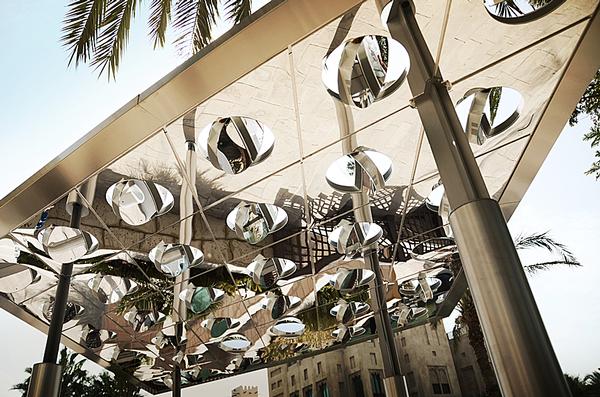

|

Sun&Shade: traditional architectural shading gets a digital twist |
|
|
 |
| Originally published in CLADmag 2017 issue 2
|
|
 |
|
